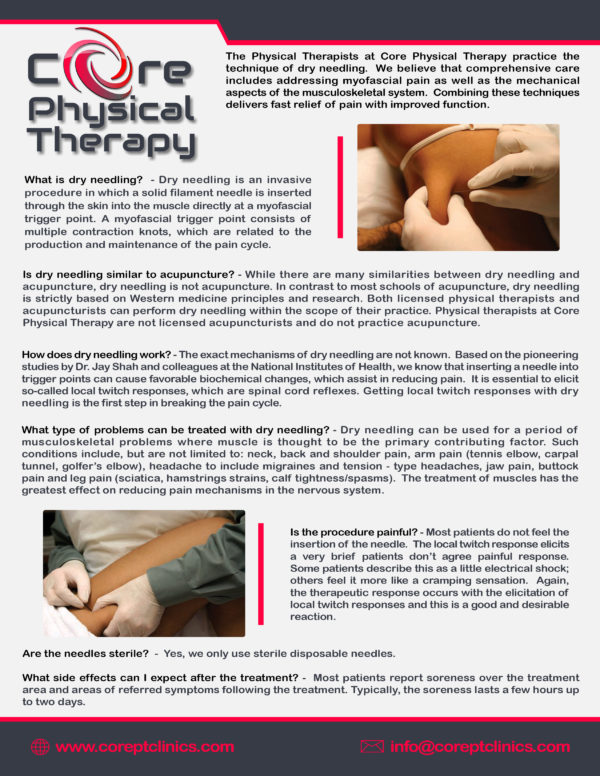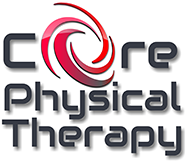Chicago’s Top Rated Local® Physical Therapy
Interested in Dry Needling? Learn more here!


In the treatment of trigger points for persons with myofascial pain syndrome, dry needling is an invasive procedure in which a filiform needle is inserted into the skin and muscle directly at a myofascial trigger point. A myofascial trigger point consists of multiple contraction knots, which are related to the production and maintenance of the pain cycle. Deep dry needling for treating trigger points was first introduced by Czech physician Karel Lewit in 1979. Lewit had noticed that the success of injections into trigger points in relieving pain was apparently unconnected to the analgesic used.
Proper dry needling of a myofascial trigger point will elicit a local twitch response (LTR), which is an involuntary spinal cord reflex in which the muscle fibers in the taut band of muscle contract. The LTR indicates the proper placement of the needle in a trigger point. Dry needling that elicits LTRs improves treatment outcomes, and may work by activating endogenous opioids. The activation of the endogenous opioids is for an analgesic effect using the Gate Control Theory of Pain. Inserting the needle can itself cause considerable pain, although when done by well-trained practitioners that is not a common occurrence. No study to date has reported the reliability of trigger point diagnosis and physical diagnosis cannot be recommended as a reliable test for the diagnosis of trigger points.
Stimulation of a local twitch response (LTR)
Dry-needling of these myofascial trigger points via mechanical stimulation causes an analgesic effect. This mechanical stimulation causes a local twitch response (LTR). An LTR is an involuntary spinal cord reflex contraction of the muscle fibers in a taut band. Triggering an LTR has been shown to reduce the concentration of nociceptive substances in the chemical environment near myofascial trigger points.
Muscle regeneration
The needle may cause a small focal lesion which triggers satellite cell migration to the area which repair or replace damaged myofibers. This occurs 7-10 days after dry needling. It is unclear whether continued dry needling within this period may disrupt this process.
A localized stretch to the cytoskeletal structures
This stretch may allow muscle fibers to resume their resting length. Patients often see an improvement in their range of motion following treatment.
Electrical polarization of muscle and connective tissue
The mechanical pressure causes collagen fibers to intrinsically electrically polarize which triggers tissue remodeling. A small insult to the tissue may restart the healing process and allow for improved tissue quality.

